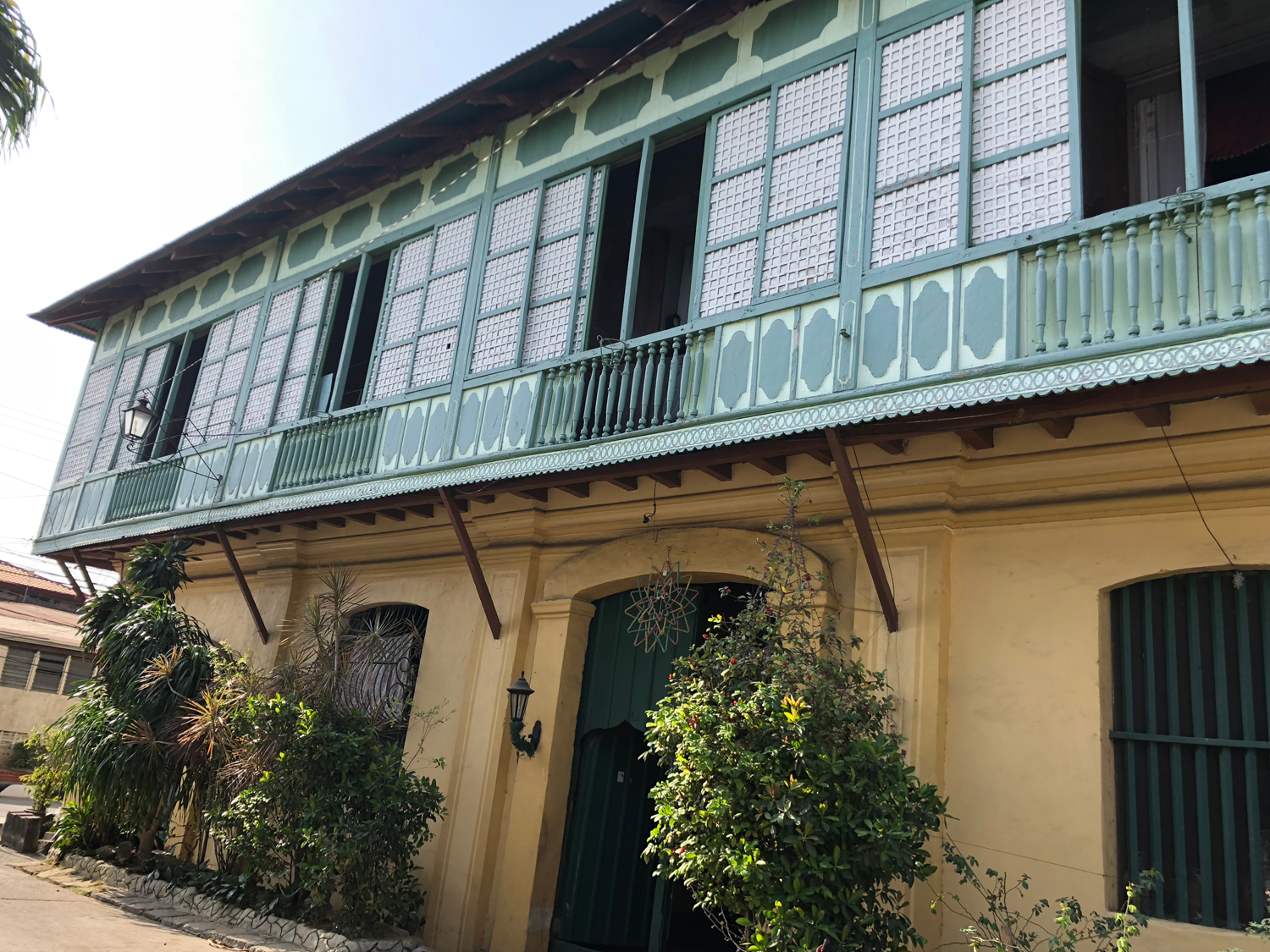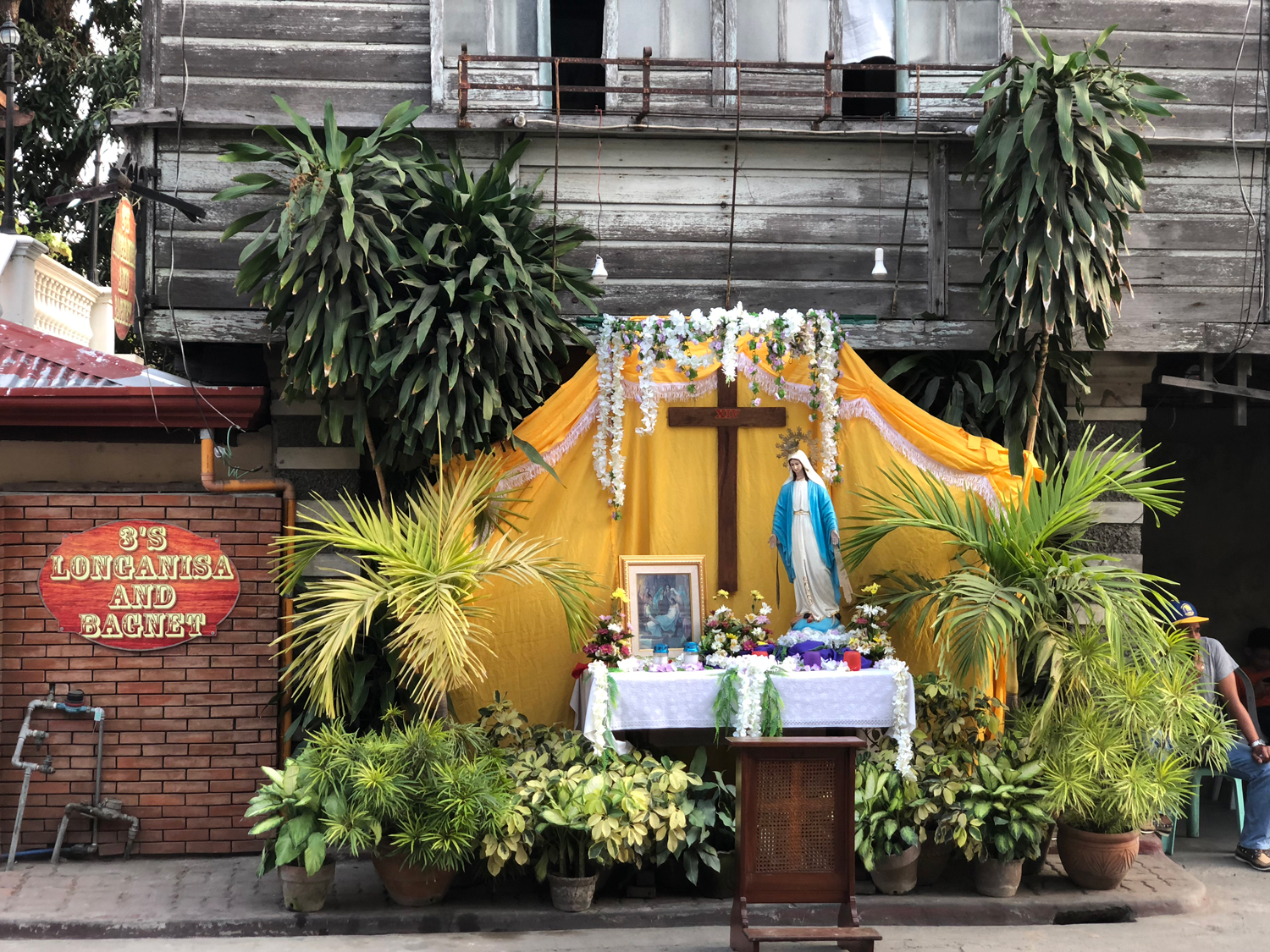Vestigial Vigan
/The Quema House on Calle Encarnacion (Photo by Criselda Yabes)
I could have been transported to the Spanish Catholic era in this heritage capital of Ilocos Sur, which took me seven hours to reach overnight on a bus ride from Manila. Vigan has preserved much of what it was like two hundred years ago today. The Quema House is almost as old as that. It belonged to the matriarch Felipa, who was the granddaughter of the colorful and rambunctious Ilocano intellectual of the 19th century, Isabelo de los Reyes. Felipa passed away recently, just months before turning one hundred years old.
The house was full of family. Felipa’s great grandson, who is three quarters French, had his baptism. The baby boy was happy in the duyan (cradle) looked after by a coterie of house help below the living quarters, where the cooking and everything else takes place. Like in the old days.
I stayed at the Quema House for a long weekend that capped Palm Sunday, when the caretaker had a prayer station built by the corner of the house, as she always does during the season of Lent. Felipa’s son-in-law, the Frenchman Jean-Marie, never fails to join the procession. Jean-Marie is married to one of Felipa’s two daughters, Marisa, whom I consider a family friend since the days I lived in Paris. Marisa, in turn, has two daughters, one of whom is the mother of the baby boy in the duyan.
A street prayer station on Palm Sunday. (Photo by Criselda Yabes)
It is now Marisa’s younger sister, Becky, who looks after the ancestral house following the death of their mother. The Quema House, which largely belonged to their mother’s side of the family, is one of few that remain inhabited by the pioneer families in Vigan, maintaining its structure from how it was originally constructed in 1820.
Marisa and Becky’s grandfather, Elias, was the youngest son from Isabelo’s first wife. He had three. Their father, who died young in his early thirties, was Elias’s first son. I spent much of my time in the house asking Marisa about the family’s genealogy, and it does get as confusing as trying to figure out the sultanate’s tarsila from the south. The north is vague for me, even though my father was from the last town of this province and going to Vigan was a rare treat.
Vigan displays history in its architectural form, a sleepy town with a distant past that has evolved into touristic charm, thanks to UNESCO billing it a World Heritage Site. It saved the small city from turning into dust; but commerce (as expected) rapidly took over, bringing the fast food business and slowly wiping out nostalgia. It doesn’t look like people come to Vigan to escape into the Spanish past.
Arriving at dawn, which was the best time of the day to feel the city, I walked toward the cobbled Calle Crisologo, the street that has sprung commerce in abandoned ancestral houses. It’s a pretty easy walk of not more than three kilometers from the Quema House on Calle Encarnacion up to Plaza Burgos, with a stop at the cathedral for a short prayer, then going past the archbishop’s house and all the way up to the capitol, round the bend to the old jailhouse, and back again.
This is the same walking route as Jean Marie’s. Inviting me to his routine one morning, he led me to a detour showing the colonial post office building and the courtyard of the archbishop’s residence, traces of the bygone days that a Frenchman would draw wonder from. I visited the jailhouse that has been renovated into a museum in a cul-de-sac where bougainvilleas bloomed and the frangipani tree emitted perfume.
Calesas by the renovated jailhouse. (Photo by Criselda Yabes)
There was an exhibit of oil paintings of the Basi Revolt by Esteban Villanueva, each tableau vividly recounting the historic event that happened around the time Vigan was founded and the Quema House was built. The Ilocano prisoners were led from the gallows to the plaza to be hanged; people come to the plaza today in the evenings to watch the dancing lights in the fountain.
In the cathedral, Jean Marie showed me the grave marker of the poetess Leona Florentino, her name intertwined in a heart with that of her husband’s, which seems rather strange considering that she was bold and courageous enough to leave him, a woman way ahead of her time in defying Catholic mores. Leona’s figure sits by the square where Calle Crisologo starts, behind her the typical Max’s Restaurant of traditional Filipino dishes, annoyingly commercializing this corner of Vigan.
The statue of Ilocano poetess Leona Florentino, mother of 19th century intellectual Isabelo de los Reyes (Photo by Criselda Yabes)
A morning parade on Calle Crisologo (Photo by Criselda Yabes)
That isn’t so surprising: where people go, the fast food follows. You would not miss McDonald’s ubiquitous arc by Plaza Burgos, along a row squeezed between Jollibee and Chow King. Many families have sold their ancestral houses to businesses; even the house next door is going to be turned into a brewery. The Singson dynastic family, currently running Ilocos Sur’s political scene, is one of the big buyers. This could very well change Vigan’s heritage status one day.
Mc Donald’s by the cathedral (Photo by Criselda Yabes)
For most of my three days, I preferred staying in the Quema House where the house help whipped up home-cooked meals to perfection for all of us at the long dining table set. At siesta we took our places in the divan or butaka by the window, reading a book or napping. The Quema House is a place where I could sleep all day long, the hours passing without guilt. Jean Marie said it was sweet to do nothing when things around us -– the traffic, the tourists -– move.
Inside the Quema House (Photo by Criselda Yabes)
Criselda Yabes is the author of "Below the Crying Mountain" set in the rebellion of the 1970s in the south. It won the UP Centennial Literary Prize in 2008 and was nominated for the Man Asian Prize in 2010. She is currently based in Manila.
More articles from Criselda Yabes









